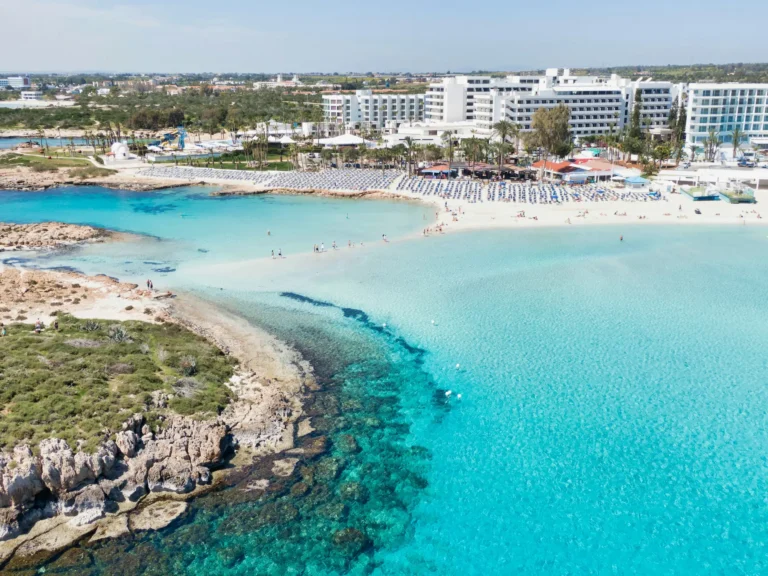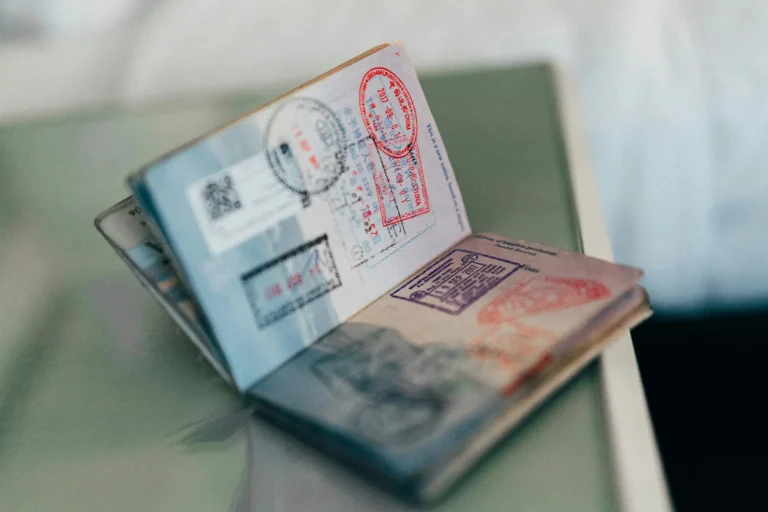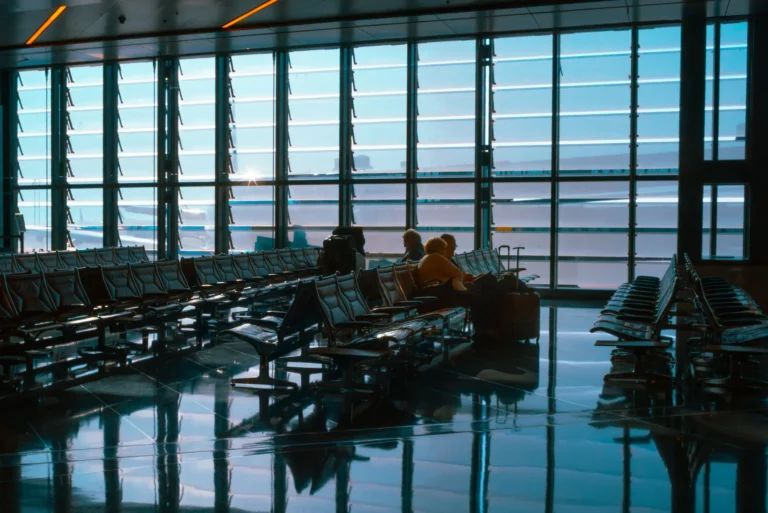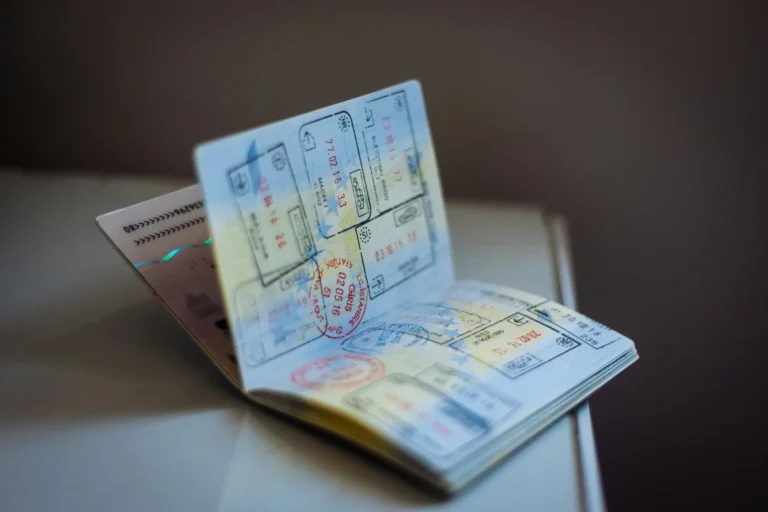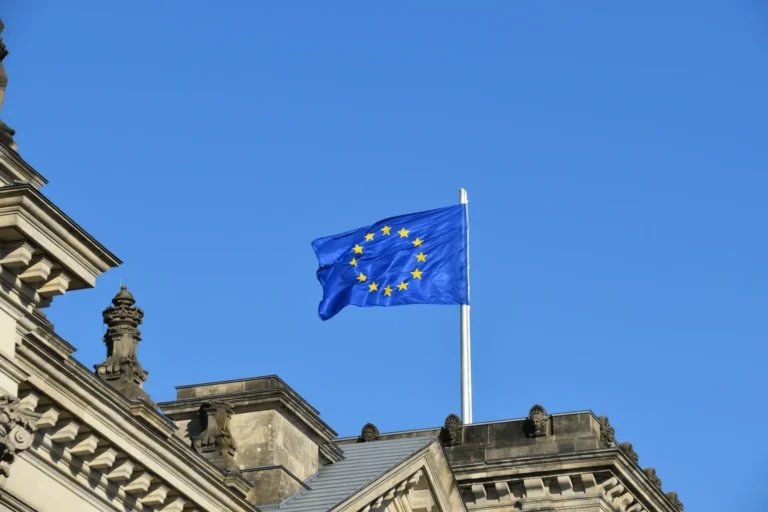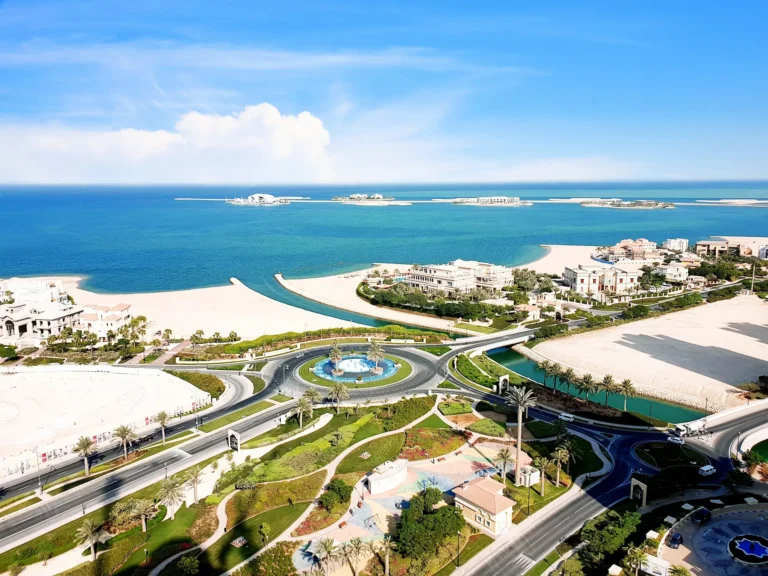
In Madrid, you sit in a park at noon, eating hot nata, people are sunbathing and life moves very slowly. In Rome, you buy pizza on an old street, you eat it standing up. In Paris, you sit in a cafe early in the morning, a baguette, butter, and a cafe au lait are all simple things, but they come in a different way. Whatever it is, the first step to make them happen is to get a Schengen visa. And for all this, you only need one visa - a Schengen visa.
A Schengen visa allows you to move freely between the Schengen zones, which bring together 27 European countries. Thanks to this visa, you can visit more than one country in one trip, and easily travel around Europe for tourism or study.
Countries included in the Schengen zone
The countries included in the Schengen zone are: Germany, France, the Netherlands, Belgium, Austria, Spain, Italy, Portugal, Poland, North Macedonia, Lithuania, Latvia, Estonia, Slovakia, Slovenia, Eastern European countries and others.
Freedom of movement with a Schengen visa
This visa allows you to visit several Schengen countries in one trip. For example, you could enter Spain, continue to France, then Germany, and exit in Italy.
What is a Schengen Visa?
A Schengen visa is a travel document issued to countries on the European continent that are members of the Schengen Agreement. This visa takes its name from the agreement signed in the Schengen town of Luxembourg in 1985. The main purpose of the agreement is to eliminate border controls between the participating countries and to allow people to move freely from one country to another. Thanks to a Schengen visa, a person who wants to visit one or more countries can move freely between these countries by obtaining just one visa.
This visa is mainly intended for short-term trips and usually allows a stay of up to 90 days. This period is calculated within a 180-day period, meaning that you can stay in the Schengen zone for a maximum of 90 days within 180 days. With a Schengen visa, it is possible to travel between these countries without separate border controls. For example, if you have a visa for Germany and this visa is multi-entry, then you can freely move from Germany to France and from there to Italy, no additional visa or border checks are required.
A Schengen visa must be used only for the purpose for which it was issued. That is, if you have obtained a visa for tourism purposes, it is not possible to use it for work. At the same time, when applying for a visa, you must obtain a visa from the embassy of the country in which you will be traveling. For example, if your main travel plan is to Spain, your visa application must be submitted to the Spanish embassy or visa center. Improper use of the visa may negatively affect future applications.
Types of Schengen visa
Short-term tourist visa (type C)
The most frequently applied type of visa. It is issued for travel, leisure, family visits or short business trips. It allows a stay of up to 90 days. The visa can be single or multiple.
Business visa
This visa should be obtained if you are attending an event, meeting or conference at the invitation of a company. An invitation letter and documents related to business activities are the main requirements.
Student visa (short-term)
Short-term courses and seminars are intended for participation. If you want to study for a long time, you should apply for a D-type student visa.
Transit visa
May be needed when changing flights at airports. If you do not leave the airport in a Schengen country, this visa is often not required. However, in some countries, such a visa is required for transit.
Long-term (D-type) visa and its differences
Issued for the purpose of education, family reunification, work permit or long-term residence. With a D-type visa, it is possible to live, work and register in that country. With this visa, only short trips to other Schengen countries can be made.
Which country is easier to apply from?
Countries like Poland, France, and Germany have higher visa approval rates. These countries can be a valuable alternative when applying for a Schengen visa.
Schengen Visa Process
Determine your travel plan. You must obtain a visa from the embassy of the country you are going to.
Fill out the visa application form. It is very important to fill it out correctly and legibly.
Prepare the necessary documents for the visa. These documents are listed below.
Set a date for the visa appointment. This is the most common step with the online system.
Now let's explain these processes one by one.
How to get a Schengen Visa?
Before applying for a Schengen visa, it is important to be fully informed about visa centers and embassies. Each center accepts countries, document acceptance rules, fee amounts and response times are different. Below is detailed information about the most commonly used visa centers and embassies in Azerbaijan:
The VFS Global center accepts visa applications from countries such as Austria, Bulgaria, Croatia, Czech Republic, Iceland, Italy, Latvia, Lithuania and Norway. The appointment process is carried out through an online system and the applicant must make an appointment in advance. If you want to get detailed information about the VFS Global visa center, click here to go to the blog with detailed information on visa processes, appointment booking, and fees. It is important to submit the required documents correctly and completely during the appointment. The fee is 35 euros. The office in Baku is located on Javanshir Street, Khatai District. In addition, facilities such as document translation, photo taking and express service are also provided. The visa response is usually issued within 7–15 working days, but this period may vary depending on the country applied for. You can click on the official page to go to it.
Visametric deals only with German visas. The application process is carried out in the following sequence: electronic appointment → document reception → biometric data collection. If you want to get detailed information about the Visametric visa center regarding the visa process, appointment and fees, you can click here to go to the relevant blog. After making an appointment, documents are submitted and fingerprints are taken. The fee is 35 euros. The visa response time is 10–15 working days. It should be noted that applications are accepted no earlier than 180 days before the planned travel date. You can click on the official page to go to it.
The Capago visa center provides services for visas to countries such as France, Belgium, Luxembourg, Monaco, the Netherlands, Portugal, Spain and Sweden. The process is carried out by online registration, submission of documents and collection of biometric data. For more detailed information about the visa process, appointment and fees regarding the Capago visa center, you can click here to go to the blog. Additional services include a premium package, document translation, photo taking, and expedited service options. The visa fee is 35 euros, and the response is usually provided within 7–15 business days. You can click on the official page to go to the link.
The BLS visa center accepts applications for Hungarian and Slovak visas. Appointments are scheduled through the BLS official website, but documents must be submitted through Visametric. Additional services include a premium package, document translation, photo taking, and destination changes. The visa fee is 35 euros, and the response time is 7–15 business days. The application must be submitted no earlier than 3 months before travel and no later than 15 business days. You can click on the official page to go to the link.
For a Greek visa, you apply directly to the Greek Embassy. If the documents are submitted completely and correctly, the response time usually varies between 7–14 days. The fee is 35 euros.
For a Swiss visa, you also apply directly to the Swiss Embassy. The response time takes approximately 10–15 business days. The correctness of the documents may affect the shortening of this period. The fee is 35 euros.
For a Polish visa, an application is made to the Polish Embassy. If the documents are submitted correctly, the response time is 10–15 working days. The fee is 35 euros.
Applications for a Romanian visa are accepted at the Romanian Embassy. The response time is given within 10–15 working days. The completeness of the documents plays an important role. The fee is 35 euros.
Before using visa centers and embassies, it is imperative to familiarize yourself with the information posted on the official website of each, prepare the required documents correctly, and carefully follow the appointment process. It is essential to be careful at these stages in order to avoid a negative response.
Documents required for a Schengen visa
- Passport: Must be valid for at least 3 months after the visa expires. It must have been issued in the last 10 years and have at least 2 blank pages.
- Visa Application Form: The official visa form must be filled out and signed.
- Photo: 3.5x4.5 cm size, taken within the last 6 months, with a light background, and in accordance with biometric rules.
- Travel Insurance: Medical insurance with a minimum coverage of 30,000 EUR within the Schengen zone must be provided.
- Flight and Hotel Reservations: Round-trip flight tickets and accommodation booking confirmation documents must be provided.
- Proof of Funds: Bank statement for the last 3 months, salary certificate, or sponsorship letter must be provided.
- Invitation Letter: If invited by someone, the letter must be in official form and supported by additional documents (ID, proof of residence).
- Additional Documents:
- Employment document (employment verification letter)
- Student ticket or university certificate
- Business document (Tax ID, tax report, etc.)
Schengen visa prices
| Visa Center | Which countries accept visas? | Visa Fee | Address and opening hours |
|---|---|---|---|
| VFS Global | Austria, Bulgaria, Croatia, Czech Republic, Iceland, Italy, Latvia, Lithuania, Norway. | 35 euros | Address: Neftchilar avenue, Crescent business center 6th floor
Working hours: Monday–Friday, 09:00–16:00 |
| Visametric | Germany | 35 euros | Address: Baku, D. Aliyeva Street 106, Winter Park Plaza, 1st floor) Working hours: Monday–Friday, 09:00–16:00 |
| Capago | France, Belgium, Luxembourg, Monaco, Netherlands, Portugal, Spain, Sweden. | 35 euros | Address: Globus Center, 609, Jafar Jabbarli street, Baku, Azerbaijan Working hours: Monday-Friday, 09:00-17:00 |
| BLS | Hungary, Slovakia. | 35 euros | Address: Slovakia and Hungary Appointments must be scheduled on the BLS website and documents must be submitted to visametric. Working hours: Monday–Friday, 10:00-17:00 |
How many days does it take to issue a Schengen visa?
The visa response usually comes within 14 business days. In some cases, this time may be longer, especially if the documents are incomplete.
Tips for getting a Schengen visa from Azerbaijan
For those who want to get a Schengen visa from Azerbaijan, there are several important tips and recommendations that can make the application process easier, smoother and more successful. First of all, the main condition for a visa application is the complete, correct and timely preparation of the necessary documents. Incorrect preparation of documents or missing documents in a Schengen visa application is one of the most common reasons, which can lead to the rejection of the visa application. Therefore, it is important to carefully check the list of documents and make sure that they meet all the requirements.
The most important thing is to prepare a detailed travel plan. You should organize the dates of travel to the country you are applying for, the reservation of the hotel or guesthouse where you will stay, as well as flight tickets in advance. Whether your travel purpose is tourism, business trip, education or family visit, documents confirming this must be provided. For example, additional documents such as an invitation letter for a business trip, an acceptance letter for education are required. A clear and logical travel plan plays a positive role in the visa decision.
In addition, documents confirming your financial situation are very important. You must show sufficient funds in your bank account and documents proving your income (salary certificate, tax return, etc.) so that the embassy can be sure that you can support yourself during your trip. Financial security is one of the main requirements for a Schengen visa.
It is also important to choose the right time when making a visa appointment. It is best to apply well in advance of your travel date, as in some cases your documents may be sent for additional verification and the response time may be extended. The Schengen visa application must be made no earlier than 6 months and no later than 15 working days before your trip. It is advisable to avoid last-minute applications.
You must be present at the appointment and provide your biometric data. It is important to give clear and honest answers to the embassy officer's questions during the personal interview.
In addition, you must pay the visa fee on time and keep the receipt. The amount of the fee may vary depending on the country you are applying to, but is usually around 35 euros. The fee is non-refundable, so it is important to be careful when applying.
Finally, it is important to consider the potential risks when applying. If your previous visas were rejected, you must provide documentation or additional evidence to explain why. Reapplying without understanding the reasons for the visa rejection may result in failure.
Eligibility for Schengen Visa Application Who Can Get a Schengen Visa?
There are certain eligibility conditions for a Schengen visa and who can apply for this visa is regulated by law. In general, individuals who want to obtain a Schengen visa must meet certain criteria. Let us explain them in detail.
First of all, the main condition for applying for a Schengen visa is to have an identity card or passport. Your passport must be valid for at least 3 months after the date of application. In addition, your passport must have at least two blank visa pages.
The applicant must have a legitimate purpose of travel to any of the Schengen countries: tourism, business trip, education, family visit, medical treatment or transit. The documents and conditions to be submitted for each type of trip may be different, but the general purpose is a legal and acceptable trip.
The applicant must have adequate financial support. This is to prove that he or she can support himself or herself during the trip. It is important to have sufficient funds in a bank account, to show a source of income or to provide a guarantee from a sponsor.
One of the main requirements for a person applying for a Schengen visa is to have an official job. Those who work in an official job must have a monthly income within a certain range, which indicates that they have sufficient financial security during the trip.
If the applicant does not have an official job, then first-degree family members (for example, parents, spouse or children) can sponsor them. It is important that the financial security for the monthly income of the sponsoring person is convincing.
For people who own a business, your monthly turnover is the main condition. They must submit a turnover statement for the last 6 months to prove their official income. This document shows that the entrepreneur’s financial situation is reliable and that he can support himself during the trip. The tax payer number (TIN) must also be indicated in the application.
The applicant must have a previous visa history, and if the previous visa was refused, he must explain the reasons for this and provide additional documents. People who have complied with the laws in the Schengen zone are preferred.
Frequently Asked Questions (FAQ)
How many countries can you travel to with a Schengen visa?
27 Schengen countries are granted free travel.
Can a Schengen visa be extended after it expires?
It cannot be extended. You must apply again.
Can those who are unemployed or do not have a formal job get a Schengen visa?
Yes, but in this case, you must be able to provide financial support from first-degree family members or other sponsors.
When is the best time to apply for a Schengen visa?
You can apply for a Schengen visa 3 months before the planned trip and no later than 15 working days before the travel date.
If your visa application is rejected, is it possible to reapply?
Yes, a person who receives a rejection can update their documents and apply again, taking into account the reasons.
Visa Support
To place your order, click here, or you can contact us at 010/50/55-3000135 for more information.


